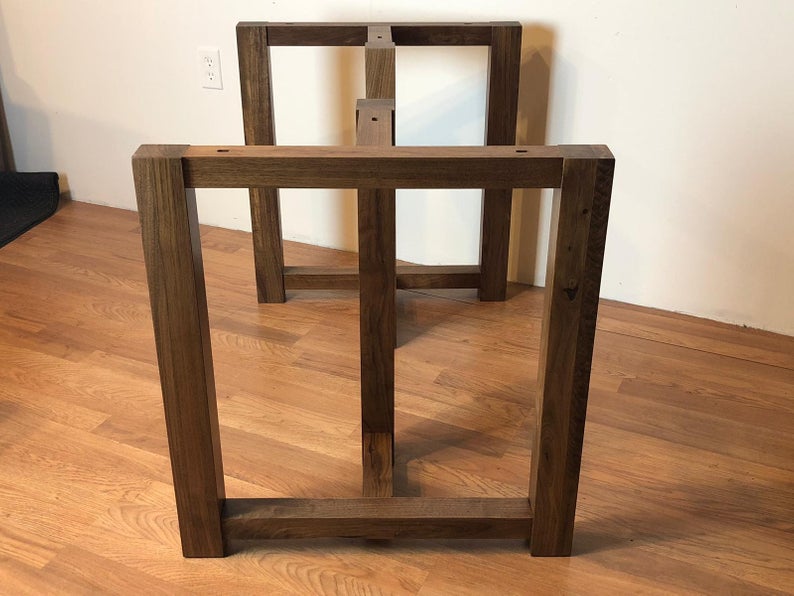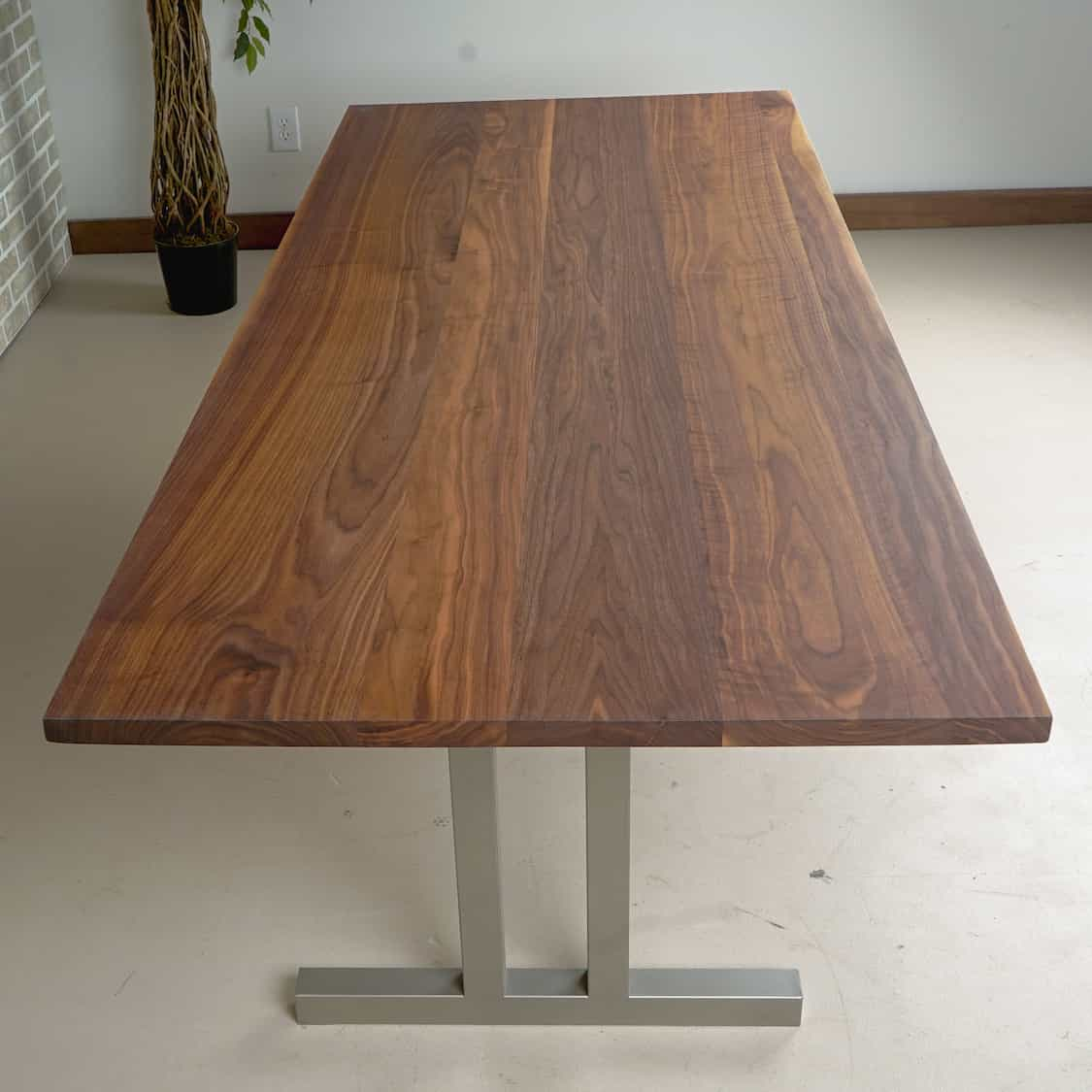Key Elements to Remember for Table Legs Wood Choices
When selecting wood for eating table legs, a number of important aspects call for careful factor to consider to guarantee both functionality and visual appeal. The selection of timber type, identified by its longevity and distinct grain patterns, plays a pivotal duty in the general layout and durability of the item. Furthermore, one have to consider upkeep needs and the ecological effects of sourcing materials. As these components intertwine, they dramatically influence the last outcome of your table. However, comprehending the nuances of each element can be intricate, resulting in vital decisions that warrant additional exploration.
Timber Kind and Characteristics
When choosing wood for eating table legs, it is necessary to comprehend the special features of various wood types. Various woods provide unique advantages and downsides, affecting both the durability and visual allure of the ended up item.
Hardwoods, such as oak, cherry, and maple, are typically chosen for their stamina and resistance to use. Oak, understood for its outstanding toughness, additionally includes a popular grain that can include character to the table. Maple provides a smooth surface and is much less vulnerable to bending, making it a dependable choice for useful furniture. Cherry timber, with its abundant color that deepens gradually, supplies a glamorous look however might need even more maintenance to avoid scratches.
On the various other hand, softwoods like yearn and fir are more budget-friendly and simpler to function with, yet they are less sturdy than hardwoods. Pine is light-weight and includes a cozy, rustic look, making it a popular option for informal dining settings. However, it is a lot more susceptible to scrapes and dents.
Understanding these features will assist in making a notified choice to ensure the legs of the dining table meet both functional and aesthetic needs.
Grain Patterns and Aesthetics
The timber's grain is not merely a visual quality; it imparts an one-of-a-kind character and appeal to each piece. Different timber species show distinctive grain patterns, varying from the straight lines of maple to the detailed swirls of oak and the striking number of walnut.
In addition, the alignment and scale of the grain can affect the regarded dimension and sophistication of the table. For circumstances, larger, a lot more noticable grains might offer a strong, remarkable impact, while finer, subtler grains can develop a fine-tuned, downplayed look. Additionally, the ending up procedure can additionally improve these patterns, emphasizing the natural appeal of the wood and drawing out rich shades.
Ultimately, the selection of grain pattern must integrate with various other design components, such as the tabletop and surrounding furniture, guaranteeing a natural aesthetic that boosts the dining experience. Thoughtful option of wood grain not only adds to the table's appeal but additionally mirrors the owner's preference and style.
Longevity and Stamina
The durability and stamina of eating table legs are critical considerations for ensuring durability and stability in any type of dining space. Choosing the best wood is important, as different types show differing levels of resilience.

Inevitably, purchasing top notch timber and durable building and construction methods will yield a table that stands the examination of time, while providing a reputable foundation for many dishes shared amongst family and friends. Prioritizing toughness and stamina makes sure that your eating table remains functional and cosmetically pleasing for years ahead.
Upkeep and Treatment
Correct upkeep and care are important for preserving the durability and strength of web link table legs made from timber. Routine cleaning is necessary; utilizing a soft, moist cloth guarantees that dust and particles do not collect, which can cause scratches and dullness. It is advisable to stay clear of extreme chemicals or abrasive materials that can damage the finish.
In addition, applying a suitable timber gloss or wax regularly can help keep the luster and protect the timber from moisture and spills. It is important to adhere to the maker's referrals concerning the kind of item to utilize, as particular finishes might more info here react adversely to certain chemicals.
Humidity and temperature variations can likewise influence wooden table legs, triggering them to warp or fracture. It's best to put the table far from direct sunshine and warm resources. If the table legs have any type of dents or scrapes, attending to these without delay can prevent more damage.
Lastly, periodically evaluating the joints and screws for tightness is essential to preserve structural integrity (Dining Table Legs Wood). By sticking to these upkeep practices, property owners can guarantee their wood table legs continue to be functional and appealing for years to come
Environmental Considerations
When choosing wood for eating table legs, it's vital to take ecological factors to consider into account. The sourcing and sustainability of wood are vital in decreasing eco-friendly influence. Choosing for timber from qualified resources, such as those supported by the Forest Stewardship Council (FSC), guarantees that the lumber is gathered responsibly, advertising woodland preservation and biodiversity.

Additionally, regional sourcing of wood decreases transport discharges, sustaining local economies while decreasing environmental influence. It is likewise a good idea to be knowledgeable about the wood's treatment and finishing processes, as specific chemicals can be hazardous to both human health and the environment. By focusing on lasting timber options, customers can add to ecological preservation while enjoying the resilience and beauty of their table legs.
Final Thought
In conclusion, choosing timber for dining table legs requires careful factor to consider of numerous elements, including wood types, grain patterns, and sturdiness. Upkeep requirements and ecological sustainability further impact timber choices, highlighting the importance of sourcing from accredited or redeemed materials.
When choosing wood for eating table legs, several important factors necessitate cautious factor to consider to ensure both performance and aesthetic allure.Proper maintenance and care are essential for protecting the durability and strength of dining table legs made from wood.When selecting timber for dining table legs, it's essential to take ecological considerations into account. By prioritizing lasting wood choices, customers can straight from the source add to ecological conservation while delighting in the durability and beauty of their dining table legs.
In final thought, choosing timber for eating table legs demands mindful factor to consider of various variables, including wood types, grain patterns, and longevity. Dining Table Legs Wood.